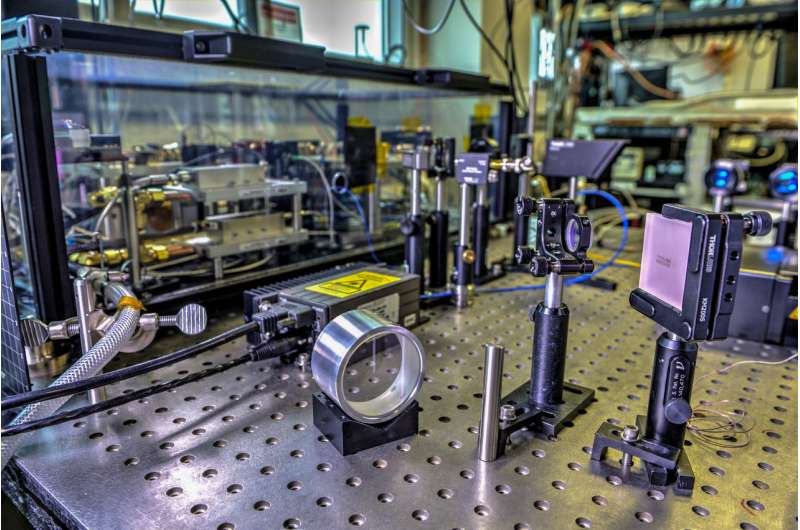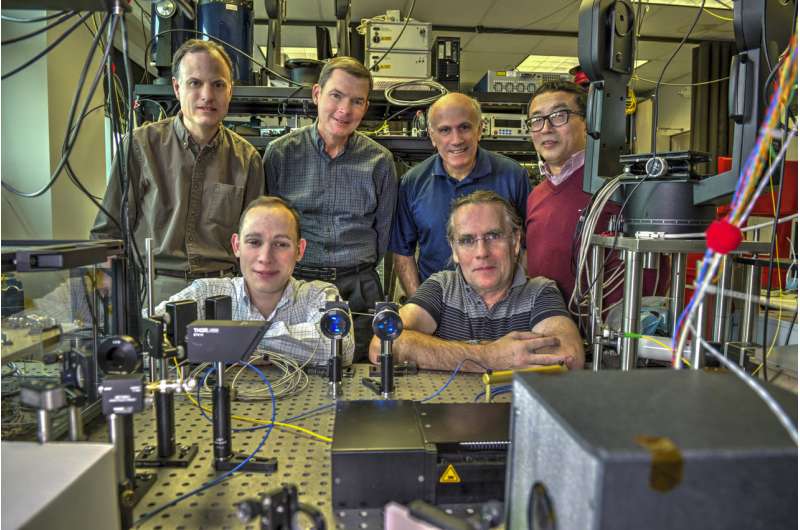NASA leverages proven technologies to build agency's first planetary wind lidar

NASA scientists have found a way to adapt a handful of recently developed technologies to build a new instrument that could give them what they have yet to obtain: never-before-revealed details about the winds on Mars and ultimately Titan, Saturn's largest moon.
We pride ourselves in leveraging new technology," said Mike Smith, a planetary scientist at NASA's Goddard Space Flight Center in Greenbelt, Maryland. Smith is collaborating with Goddard remote-sensing scientist Jim Abshire to create an experimental or demonstration test model of MARLI, short for the MARs LIdar for global climate measurements from orbit. "Why start from scratch when you can adapt recent technologies?" Smith said.
NASA's First Planetary Lidar
The experimental MARLI, which the team believes will be mature enough to propose for a future orbiter mission in a couple of years, could become NASA's first planetary wind lidar. Its chief job would be to profile the vertical distribution of atmospheric aerosols, including dust and ice particles, and directly measure wind velocities to determine how these conditions change over time, location, and season.
This information is vital to understanding everything from the transport of potential biomarkers, such as methane, to providing input for global circulation models of the atmosphere that, among other things, help determine safe and precise landing locations for spacecraft.
Although the team conceived MARLI as a potential next-generation instrument for probing Mars' thin atmosphere and advanced the concept through NASA's Planetary Instrument Concepts for the Advancement of Solar System Observations, or PICASSO, program, a modified version also could be used to investigate Titan, Abshire said. He and his team recently won additional research-and-development funding from NASA's Maturation of Instruments for Solar System Exploration, or MatISSE program, to further advance MARLI and make the necessary adjustments to enable Titan investigations.
"After 20-plus years of launching orbiters and rovers, we've learned a lot about environmental conditions on Mars, including temperatures and atmospheric gases," Smith continued. He added, however, that scientists have obtained very few direct measurements of the winds, which Mars rovers have clocked at 45 miles per hour or faster. And though Mars has a low-density atmosphere, the winds are often strong enough to completely enshroud the planet in dust. "If we were going to write a list of the things we don't know, winds would top the list."
If scientists know little about Martian winds, they know even less about atmospheric aerosols and dynamics on Titan, which is the only moon to host a dense atmosphere and the only object—aside from Earth—to have stable bodies of liquid on the surface, Abshire added.

The Solution
MARLI could provide a solution, its developers believe. From its orbit around Mars or Titan, its beam would be pointed roughly 30 degrees off nadir (directly below the spacecraft). In that orientation, the instrument would operate much like Doppler radar, a kind of specialized radar that measures velocity. It does this by bouncing a microwave signal off a desired target and analyzing how the object's motion alters the frequency of the returned signal. However, instead of radio or microwaves, MARLI would continuously pulse infrared light toward the surface with its onboard laser.
Due to the presence of dust and ice particles in the atmosphere, some light would scatter before it could reach the surface and some of that light would make its way back to MARLI's onboard telescope, which would gather the returning backscatter signals and direct them to the instrument's detectors. The resulting data not only would reveal how fast the winds are blowing, but also the distribution of dust and ice in that part of the atmosphere. Such measurements around the globe would give scientists a three-dimensional view of the dust and wind structure on Mars and how it changes with time, location, and season.
"Our approach has a high likelihood of success. It leverages key laser and receiver technologies from previous space lidar missions, and other developments," including some that have mapped the surface features or topographies of Mars, Mercury, and the Moon, Abshire said. "The hardest part is getting a ride to Mars," Smith added.
The Adaptation of Technologies and Measurement Approaches
MARLI's laser, to be built by the Herndon, Virginia-based Fibertek, Inc., is an adaptation of the device the company developed for the Goddard-developed Cloud Aerosol Transport System, or CATS. Though originally conceived as an aircraft-based instrument, CATS developers modified the instrument and launched it to the International Space Station in 2015 where it gathered more accurate global profiles of Earth's clouds and atmospheric aerosols. After 33 months in orbit, the instrument ended operations in late 2017.
MARLI's telescope, furthermore, is an adaptation of the one used on the Mars Orbiter Laser Altimeter, an instrument that flew on the Mars Global Surveyor spacecraft, and its wind-measurement technique is similar to the one demonstrated by an airborne instrument called the Tropospheric Wind Lidar Technology Experiment, also known as TWiLiTE.
And its detector technology, created by team member Xiaoli Sun and his industry partner, the Dallas, Texas-based DRS Technologies, represents a new technology adapted for wind measurements. The detector is the world's first photon-counting detector sensitive to the mid-infrared wavelength band—a spectral sweet spot for several remote-sensing applications, including the detection of ice.
Coupled with a device that converts the returning signals into actual photon numbers, the detector is unique. Each sesame seed-sized detector registers each converted photon in the returning signal, giving it unprecedented sensitivity. In addition to being baselined for MARLI, the detector technology has found homes in two airborne laser instruments that Abshire and Haris Riris, another MARLI team member, designed to measure carbon dioxide and methane in Earth's atmosphere.
Because of this leverage, "MARLI is uniquely capable of answering these important science questions with a single instrument," Abshire said. "This will allow us to better understand the things that are happening in the atmosphere, including the transport of dust and ice particles—the genesis of dust storms. Right now, these basic questions still remain."
Provided by NASA's Goddard Space Flight Center




















